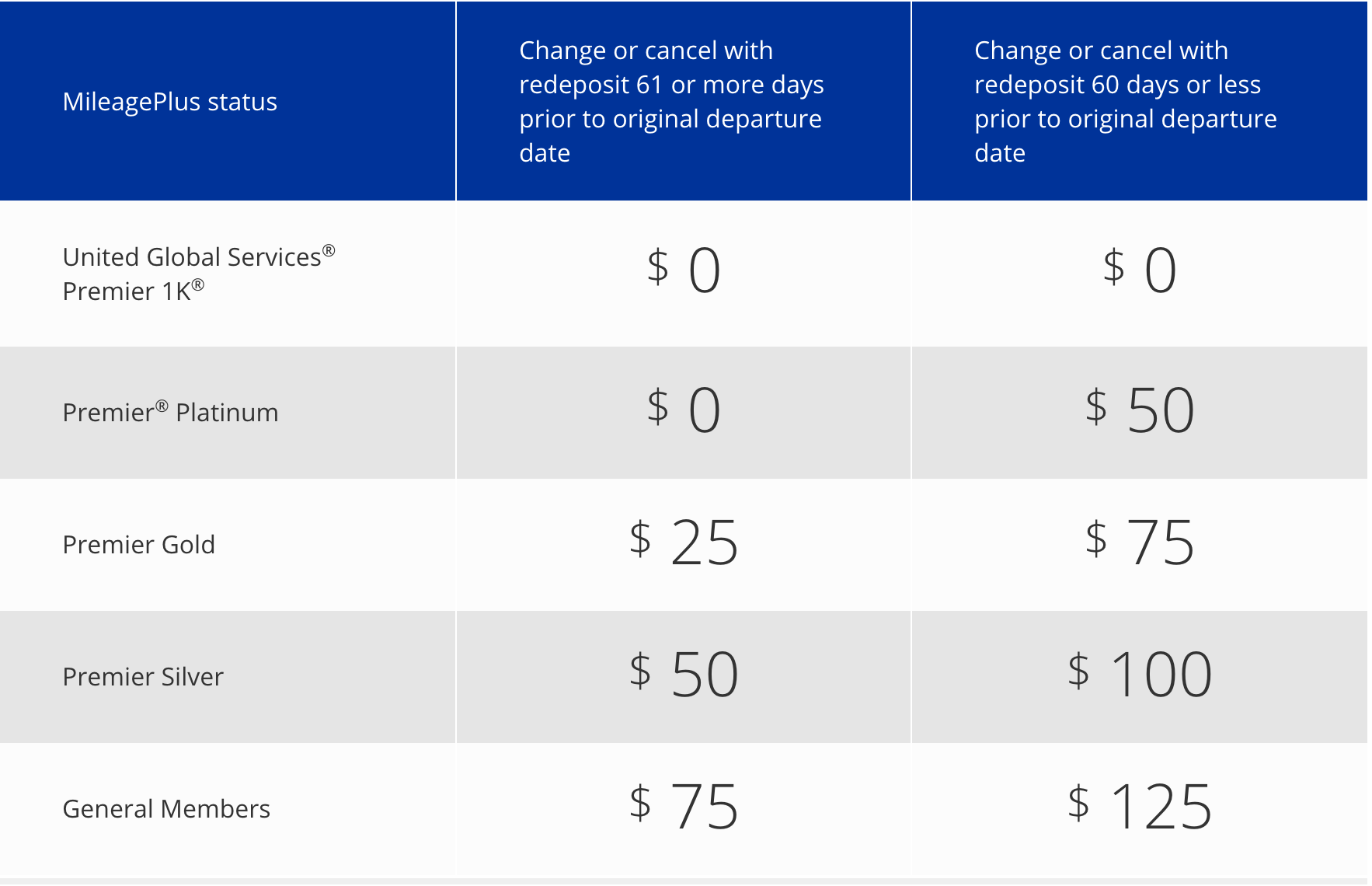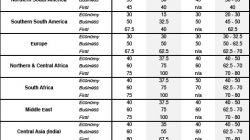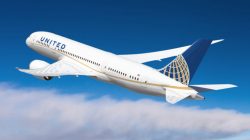Just when I was telling one of my friends that United’s MileagePlus program was still a good program despite all the recent negative changes, they go ahead and sucker punch me with another award chart devaluation. Seriously, the hits just keep coming and coming. And as much as I have stuck by them all these years, I am starting to have serious doubts about whether or not MileagePlus is worth anything anymore.
But I’ll give them credit. United came out with this announcement with plenty of warning and they didn’t try to sugarcoat it. These new changes will only affect new bookings made on or after November 1, 2017. In this day and age of devaluations, five months of warning is pretty good. However, any changes to existing awards after the new rules take effect will be subject to the new award levels and fees.
Okay, let’s look at the three changes.
New Fee for Returning Miles, Even with Status
United will be adding a “no show” fee for award bookings. That is, if you make an award booking and fail to show up for your trip (without properly canceling your ticket), United will charge you $125 to REDEPOSIT your miles back into your United MileagePlus account. If you don’t care about getting your miles back, this won’t cost you anything. There has been a redeposit fee in the past, but this fee specifically targets awards that are cancelled after departure.
What’s different is that this “no show” fee will apply to all MileagePlus members regardless of elite status. The normal redeposit fee when awards are cancelled before departure is reduced or waived for elite members, which means only elite members will suffer from this change. For reference, here are the existing fees that will remain in effect if you cancel before departure.
Cancelling before departure will have a reduced or no fee, depending on status (as much as $125 for those without status). Cancelling 61 or more days before departure will have a reduced fee even without status. Try to make up your mind as soon as possible, but experienced award travelers know that sometimes the best award space appears close to departure, necessitating last-minute changes.
Variable Pricing for Standard Awards
Now let’s talk about the changes that won’t affect the majority of us – Standard Awards. Who books these anyway? (You should always try to find Saver Awards, which are usually what partners make available to United.)
Standard awards will soon be called “Everyday Awards.”
Standard Award prices used to be fixed. They were significantly more expensive than Saver Awards but they were fixed and you knew exactly how much they would cost. But soon, Everyday Awards prices will fluctuate based on (I’m assuming) the price of the revenue ticket. So in theory, more popular flights with less available seats will cost more miles than less popular flights with more open seats.
And because there are no “fixed” costs in miles, there’s no telling how much these awards will actually cost. One positive item is that United published an award chart showing the MAXIMUM price for Everyday Awards. For example, the maximum price for an Everyday Award for travel within the 48 contiguous United States will not cost more than 32,500 miles, one way in economy class. A standard award for the same flight currently costs 25,000 miles. And on the other end of the extreme, a one-way, economy class Everyday Award from the United States to Australia will cost up to 100,000 miles under the new Everyday Award price.
Here’s a portion of the new chart so you can see what prices might be like for a few destinations in North America.
In other words, Standard Awards are getting more expensive. But United is at least trying to be more transparent than Delta, which stopped publishing its award chart altogether. It’s also possible that you won’t pay more for that Everyday Award. Variable pricing means that it could be higher, but it could also be the same or maybe lower. People have reverse engineered Delta’s hidden chart, and even they don’t charge the highest price on every day.
Higher Prices for Saver Awards (a.k.a. Devaluation)
Okay, now for the award chart devaluation that’s going to affect the rest of us: Saver Awards. Again, these new prices will only affect flights operated by United, United Express and Copa Airlines. I’ll talk about the Star Alliance/partner award changes later.
United’s prices aren’t going up much, in most cases just 5,000 to 10,000 miles round-trip when you fly in business class and no change at all if you fly in coach. Here are the new one-way prices (in thousands of miles) for economy/business class award tickets from the continental United States to:
- Mexico/Central America/Caribbean: 17.5/30 (unchanged)
- Northern South America: 20/35 (unchanged)
- Southern South America: 30/60 (increased from 30/55)
- Europe: 30/60 (increased from 30/57.5)
- Middles East: 42.5/75 (increased from 42.5/70)
- South Asia: 40/75 (increased from 40/70)
- North Asia: 35/70 (unchanged)
- Japan: 35/70 (increased from 35/65)
- Australia/New Zealand: 40/80 (increased from 40/70)
But on domestic flights, business class Saver Awards on PREMIUM transcontinental routes and select Hawaii routes will increase more.
- Premium transcon routes such as LAX/SFO to EWR and BOS will go from 25,000 miles each way to 35,000 miles each way. That’s 20,000 miles more round-trip.
- Premium select routes to Hawaii will go from 40,000 to 50,000 miles each way in business class and from 50,000 to 55,000 miles each way in first class. This only applies to flights that originate east of the Rocky Mountains. West Coast departures remain unchanged at 40,000 miles in business class and 50,000 miles in first class.
Further changes will affect the Star Alliance/partner award chart, but they are not huge (one of the last big devaluations was when United first created a separate partner award chart). Select routes and destinations will receive small prices increases in all cabins. Scott’s already making plans to update the Award Maximizer so you can be sure that you’ll have accurate prices available on or before the changeover.






